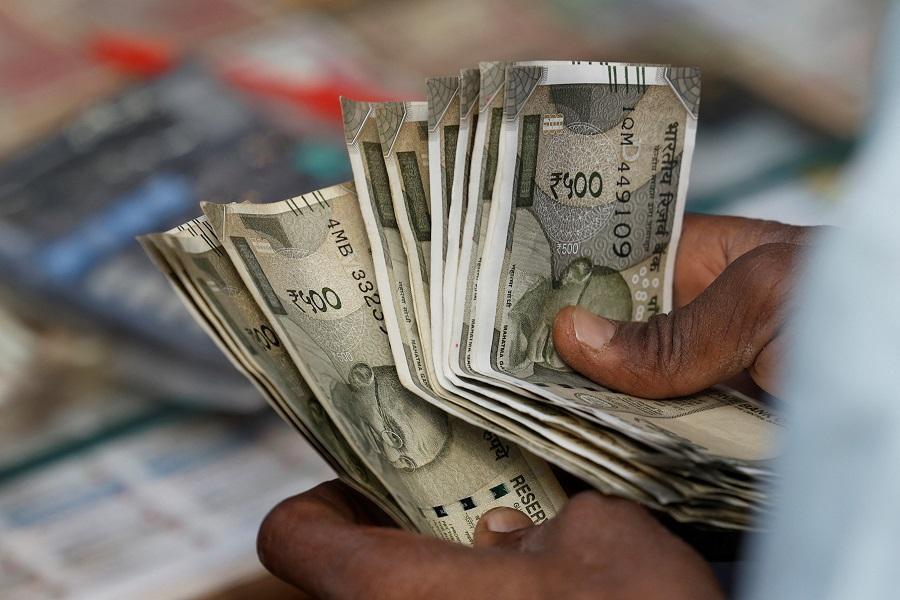
Rupee Set to Open Weaker as Trump Threatens 25% Tariff on Exports
The Indian rupee is expected to open weaker on Thursday, following a warning from U.S. President Trump that he may impose a 25% tariff on Indian exports. Despite ongoing talks between the two countries, the threat has sent shockwaves through the markets, causing concerns about the impact on India’s economy.
The rupee, which has already been under pressure due to a range of factors including a widening trade deficit and a surge in oil prices, is likely to extend its losses on Thursday. According to market analysts, the Reserve Bank of India (RBI) may be forced to intervene to support the currency, which is nearing its record low of 87.95.
The 1-month NDF (non-deliverable forward) is suggesting an opening range of 87.66-87.69, compared to 87.42 previously. This indicates that traders are expecting the rupee to weaken further, with some predicting a potential fall to 88.00 or even lower.
The threat of a 25% tariff on Indian exports is a significant development, as it would not only hurt Indian businesses but also have a broader impact on the country’s economy. India is one of the largest exporters of goods to the United States, and a tariff of this magnitude would be a major blow to the country’s trade balance.
The rupee has already been under pressure in recent weeks, driven by a range of factors including a widening trade deficit and a surge in oil prices. The trade deficit has been exacerbated by a surge in imports, particularly of oil, which has pushed up the cost of living for consumers.
The impact of a 25% tariff on Indian exports would be significant, as it would not only hurt Indian businesses but also have a broader impact on the country’s economy. India is one of the largest exporters of goods to the United States, and a tariff of this magnitude would be a major blow to the country’s trade balance.
The rupee has already been under pressure in recent weeks, driven by a range of factors including a widening trade deficit and a surge in oil prices. The trade deficit has been exacerbated by a surge in imports, particularly of oil, which has pushed up the cost of living for consumers.
In addition to the impact on trade, the rupee’s weakness would also have implications for the country’s currency reserves. A weaker rupee would reduce the value of India’s foreign exchange reserves, which could have a broader impact on the country’s financial stability.
The RBI has been actively intervening in the foreign exchange market to support the rupee, and it is likely to continue to do so in the coming days. The central bank has been selling dollars to buy rupees, which has helped to stabilize the currency. However, the RBI’s interventions have not been enough to stem the tide of the rupee’s weakness, and the currency is now nearing its record low.
The Indian government has been trying to negotiate a deal with the US government to avoid the imposition of tariffs, but so far, there has been little progress. The Indian government has offered to increase its purchases of US goods and services, but the US government has been demanding more concessions.
The rupee’s weakness is likely to have a broader impact on the Indian economy, as it could lead to higher inflation and interest rates. A weaker rupee would make imports more expensive, which could lead to higher prices for consumers. This could have a broader impact on the economy, as higher prices could reduce consumer spending and economic growth.
In conclusion, the rupee is likely to open weaker on Thursday following a threat from US President Trump to impose a 25% tariff on Indian exports. The RBI may be forced to intervene in the foreign exchange market to support the currency, which is nearing its record low. The impact of a 25% tariff on Indian exports would be significant, and would not only hurt Indian businesses but also have a broader impact on the country’s economy.






